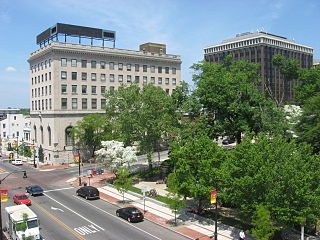
Norristown is a municipality with home rule status and the county seat of Montgomery County, Pennsylvania, United States, in the Philadelphia metropolitan area. Located along the Schuylkill River, approximately 6 miles (9.7 km) from Philadelphia, Norristown had a population of 35,748 as of the 2020 census. It is the fourth-most populous municipality in the county and second-most populous borough in Pennsylvania.
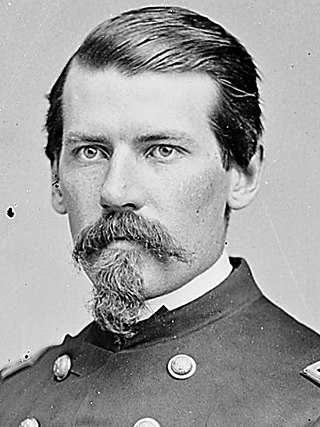
Horace C. Porter was an American soldier and diplomat who served as a lieutenant colonel, ordnance officer and staff officer in the Union Army during the American Civil War, personal secretary to General and President Ulysses S. Grant. He also was secretary to General William T. Sherman, vice president of the Pullman Palace Car Company and U.S. Ambassador to France from 1897 to 1905.

George Wolf was the seventh governor of Pennsylvania from 1829 to 1835. On June 29, 1888, he was recognized as the "father of the public-school system" in Pennsylvania by the erection of a memorial gateway at Easton.
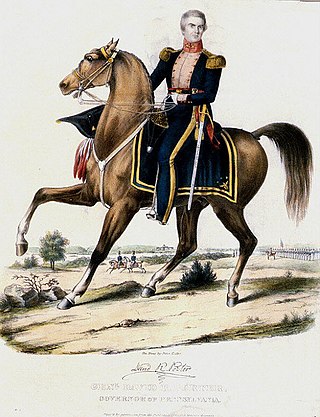
David Rittenhouse Porter was the ninth governor of Pennsylvania. Voted into office during the controversial 1838 Pennsylvania gubernatorial election, which was characterized by intense anti-Masonic and anti-abolitionist rhetoric during and after the contest that sparked the post-election Buckshot War, he served as the state's chief executive officer from 1839 to 1845.

John Frederick Hartranft was an American military officer who read the death warrant to the individuals who were executed on July 7, 1865, for conspiring to assassinate American President Abraham Lincoln. Previously having achieved the rank of major general of the Union Army during the American Civil War, he had also been awarded the U.S. Medal of Honor for his actions in the First Battle of Bull Run.

George Bryan Porter was an American statesman in Pennsylvania and Territorial governor of Michigan from August 6, 1831, until his death on July 6, 1834.
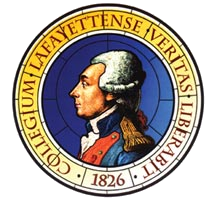
Lafayette College is a private liberal arts college in Easton, Pennsylvania. Founded in 1826 by James Madison Porter and other citizens in Easton, the college first held classes in 1832. The founders voted to name the college after General Lafayette, a hero of the American Revolution.
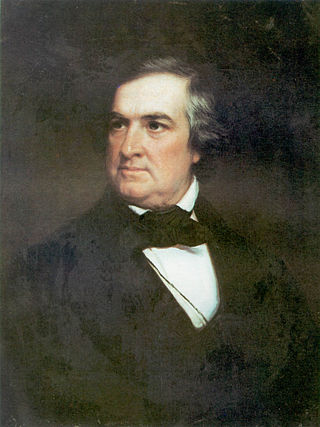
James Madison Porter served as the 18th United States Secretary of War and a founder of Lafayette College.

Robert Patterson was an Irish-born American military officer who served as a United States Army major general during the Mexican–American War, and a Union Army major general during the American Civil War. During the Mexican-American War, he served as second in command to Winfield Scott and fought at the Siege of Veracruz and the Battle of Cerro Gordo.
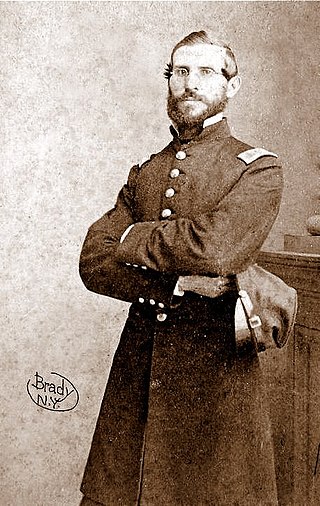
Adam Jacoby Slemmer was an officer in the United States Army during the Seminole Wars, the Old West, and the American Civil War.

Edward Franc Jones was an American merchant, manufacturer, soldier, author and politician from New York.

George Childs Burling was a United States Union Army officer during the American Civil War, serving mostly as colonel and commander of the 6th New Jersey Volunteer Infantry. Burling was born in Burlington County, New Jersey, raised on his father's farm and educated at a private school in Norristown, Pennsylvania. He was a coal merchant and a militia officer before the war. Burling's militia company was mustered into the volunteer service for a three-month term in July 1861, but it became company F of the 6th New Jersey with a three-year enlistment on September 9, 1861. Burling became the regiment's major on March 19, 1862, and lieutenant colonel on May 7 of that year. Burling was wounded at the Second Battle of Bull Run in August 1862.
Norristown Academy was a private preparatory academy established in 1805 in Norristown, Pennsylvania. Many prominent people have been educated there, including Major General Winfield Scott Hancock, Governor David Rittenhouse Porter, James Madison Porter, and Samuel Medary. It was torn down in 1829.

Adoniram Judson Warner was a U.S. Representative from Ohio and an officer in the Union Army during the American Civil War.

Henry Blackstone Banning was a lawyer and three-term U.S. Representative from Ohio, as well as an infantry officer in the Union Army during the American Civil War.
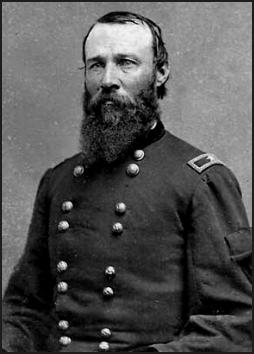
Washington Lafayette Elliott was a brigadier general in the Union Army during the American Civil War. He led a division of IV Corps at the Battle of Nashville in 1864. In 1866, he was awarded the honorary grade of brevet major general, U.S. Army.

Joel Jones was an American lawyer, jurist, and mayor of Philadelphia.
James Madison Porter III (1864–1928) was an American civil engineer notable for his role in designing two unique bridges across the Delaware River and for his development of the civil engineering program at Lafayette College. His grandfather, James Madison Porter, was one of the college's founders. Porter III served on the civil engineering faculty at Lafayette from 1890 to 1917 and was an early advocate for materials testing.

Reverend James Hall Mason Knox D.D., LL.D was a Presbyterian divine and educator, serving as the 8th president of Lafayette College.


















